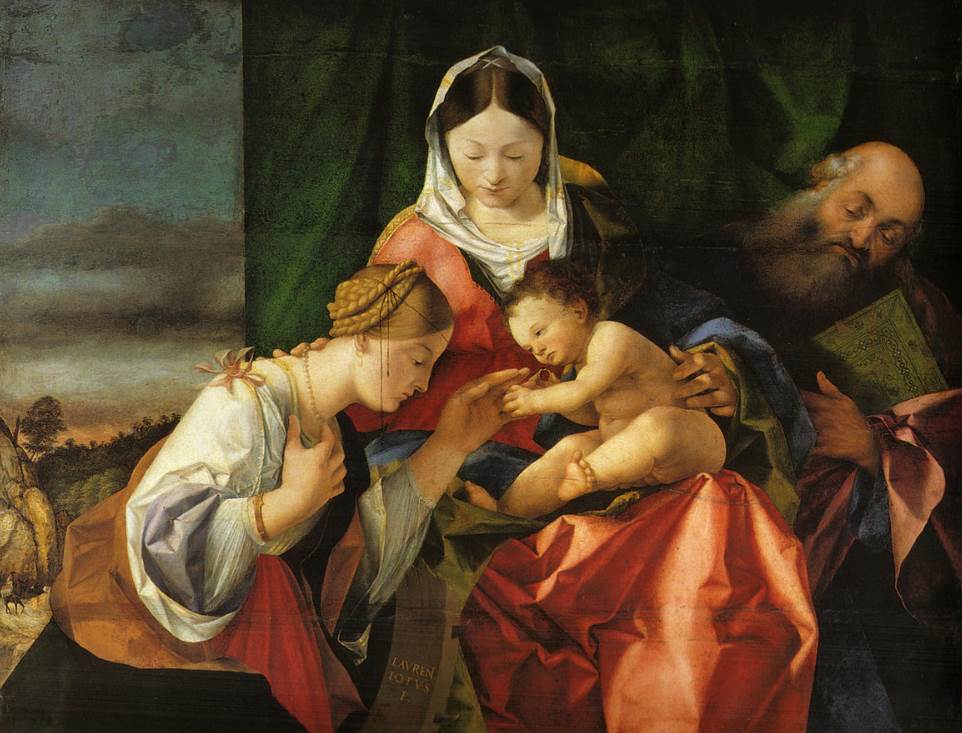One of the greatest collections of paintings of the Old Masters in Europe is housed in a fantastic Renaissance-style building in a city in Southern Germany.
The Alte Pinakothek in Munich, the capital city of the German state of Bavaria, has a history that dates back to the first half of the 19th century.
It was King Ludwig I of Bavaria who commissioned the construction of the museum in 1826. About a decade later, he had his magnificent gallery to house the impressive Wittelsbach collection.
The museum opened its doors in 1836 and was one of the most modern art galleries in Europe at the time.
Unfortunately, the original structure was severely damaged during World War II. It was, however, completely rebuilt the following decade and reopened to the public in 1957.
The museum’s name is a reference to the period of the collection which is between the 14th and 18th centuries.
Two other museums in Munich, the Neue Pinakothek and the Pinakothek der Moderne, cover periods of the 18th and 19th centuries and 20th and 21st centuries respectively.
Let’s take a closer look at some of the most famous paintings at the Alte Pinakothek in Munich!
1. Madonna of the Carnation – Leonardo da Vinci
- Date created: 1478-1480
- Dimensions: 62 × 47.5 centimeters (24 × 18.7 inches)
Madonna of the Carnation is a painting by Leonardo da Vinci (1452-1519) that is also known as “Madonna with Vase,” “Madonna with Child,” or “Virgin with Flower.” A carnation is a type of flower that was often included in Renaissance paintings featuring the Virgin Mary and her child Jesus Christ.
What’s remarkable about this painting is that it was originally thought to be a work by Andrea del Verrocchio (1435-1488), the Renaissance master of whom da Vinci was an apprentice. The quality of the work has made art historians conclude that it was by the hand of the young Leonardo.

2. Massacre of the Innocents – Peter Paul Rubens
- Date created: 1638
- Dimensions: 198.5 × 302.2 centimeters (78.1 × 119 inches)
Massacre of the Innocents is one of the many monumental paintings by Peter Paul Rubens (1577-1640), the Flemish master who defined Baroque art in the 17th century. It depicts the horror story as told in the Gospel of Matthew in which King Herod ordered the execution of all male children below the age of 2.
The painting at the Alte Pinakothek is the second version of this subject that Rubens painted in his career. The first version has a darker tonality and is part of the collection of the Art Gallery of Ontario in Canada. The painting in Munich was completed during the final two years of the artist’s life.
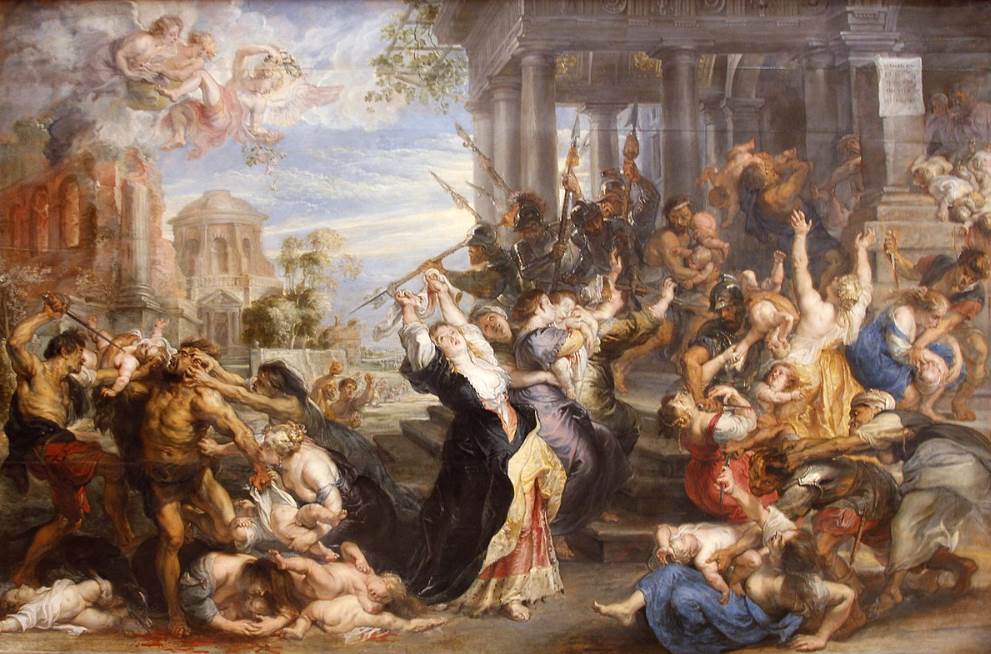
3. Self-Portrait – Albrecht Dürer
- Date Created: 1500
- Dimensions: 67.1 × 48.9 centimeters (26.4 × 19.3 inches)
Albrecht Dürer was the most renowned German artist of the Renaissance period and his incredible talent is reflected in this remarkable Self-Portrait. It’s also known as “Self-Portrait at Twenty-Eight,” a reference to the fact that he completed it shortly before his 29th birthday.
It’s considered to be the most complex Self-Portrait in the artist’s oeuvre, mainly because it resembles many contemporary depictions of Jesus Christ. The way he raises his hands, the dark color scheme, and the poignant stare of the man all resemble religious art of the 15th century.
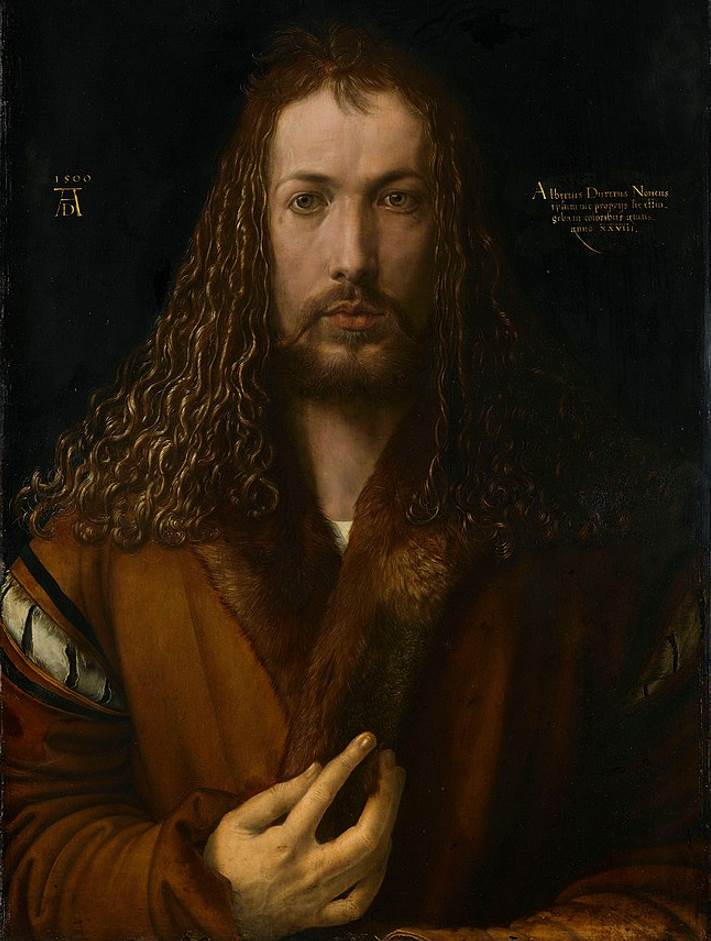
4. The Battle of Alexander at Issus – Albrecht Altdorfer
- Date created: 1529
- Dimensions: 158.4 × 120.3 centimeters (62.4 × 47.4 inches)
The Battle of Alexander at Issus or “Alexanderslacht” in German is a painting by German Renaissance artist Albrecht Altdorfer (1480-1538). He revolutionized landscape painting in the early 16th century and was one of the founding members of the Danube School.
The painting depicts a battle that took place in the year 333 B.C. in which Alexander the Great won a great victoria over Darius III of Persia. This victory at Issus in Southern Anatolia paved the way for Alexander to conquer the Persian Empire. It’s one of the greatest Renaissance landscape paintings ever produced.

5. The Honeysuckle Bower – Peter Paul Rubens
- Date created: 1609
- Dimensions: 178 × 136.5 centimeters (70 × 53.7 inches)
The Honeysuckle Bower is a painting by Peter Paul Rubens that he completed shortly after he returned from his extended stay in Italy in the first decade of the 17th century. It depicts the artist together with his first wife Isabella Brant (1591-1626) while they sit under a honeysuckle shrub.
The painting is believed to be a work that commemorates the couple’s marriage which took place around the time it was painted. Rubens depicted himself as an aristocrat who holds his hand on his sword and there are numerous symbolic references to marriage.
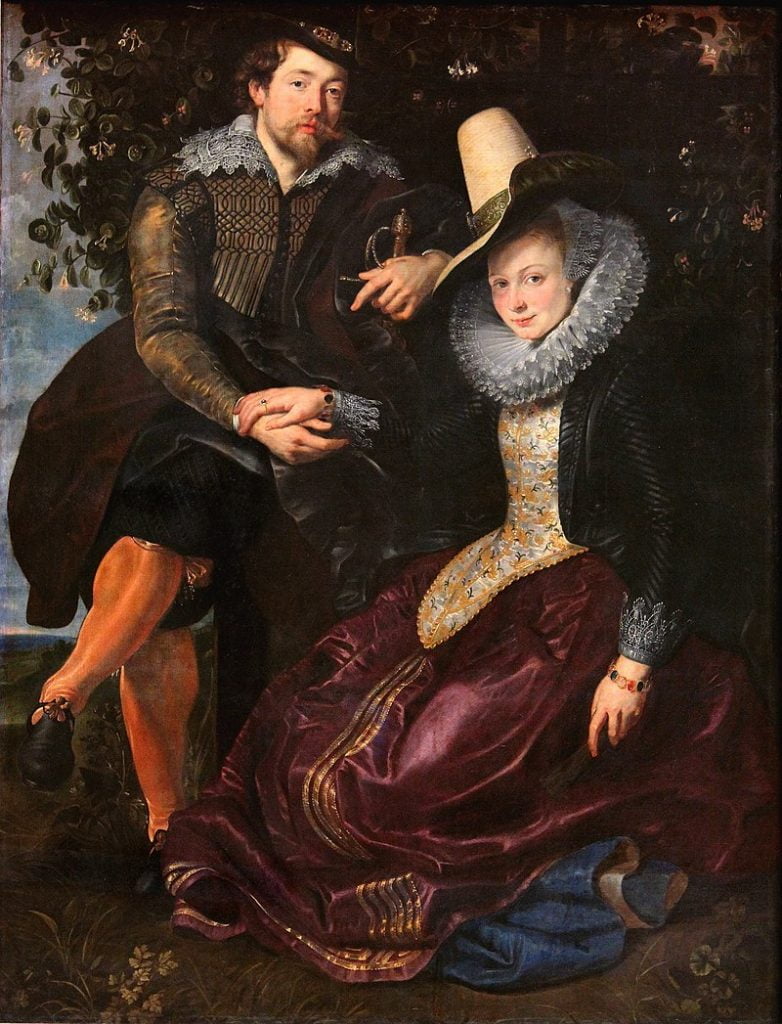
6. Still-Life with Partridge and Gauntlets – Jacopo de’ Barbari
- Date created: 1504
- Dimensions: 52 × 42.5 centimeters (20.5 × 16.7 inches)
Still-Life with Partridge and Gauntlets is a painting by Italian artist Jacopo de’ Barbari (1460-1516), a man who left his native Venice behind to live and work in Germany in the early 16th century. The relatively simple subject matter of this painting is exactly what makes it so special.
This painting is considered to be one of the first examples of still lifes in history and the first to include the remarkable trompe-l’œil effect in painting since antiquity. This means that he integrated a form of optical illusion to create depth into a two-dimensional canvas.

7. The Land of Cockaigne – Pieter Bruegel the Elder
- Date created: 1567
- Dimensions: 52 × 78 centimeters (20.5 × 31 inches)
The Land of Cockaigne or “Het Luilekkerland” is a remarkable painting by Pieter Bruegel the Elder (1525-1569). It depicts a medieval myth in which the mythical land of Cockaigne was a land of abundance. As you can see, the artist didn’t have high regard for this supposed-to-be paradise.
Just like most of the works of Pieter Brueghel the Elder, he chose to highlight the common mistakes of human beings, in this case, gluttony (over-indulging in food) and sloth (laziness). These are two of the 7 deadly sins according to the Catholic religion.
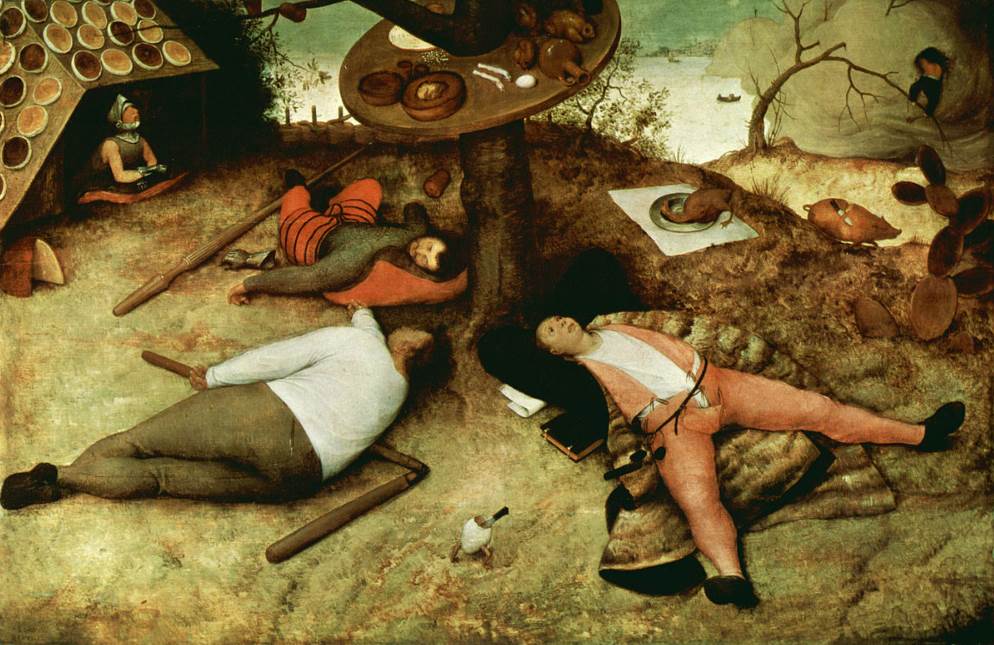
8. Portrait of Charles V – Titian
- Date created: 1548
- Dimensions: 203.5 × 122 centimeters (80.1 × 48 inches)
Portrait of Charles V is a painting by Titian (1488-1576) which depicts Charles V, Holy Roman Emperor, in a seated position. It’s one of several portraits produced by Titian of Charles V while he was working in his imperial court in the German city of Augsburg.
Charles V is dressed in black which is in sheer contrast with the red carpet and gold tapestry behind him. A hazy landscape can be seen through the window. This huge portrait was completed at the same time as the famous Equestrian Portrait of Charles V which is in the collection of the Prado Museum in Madrid.
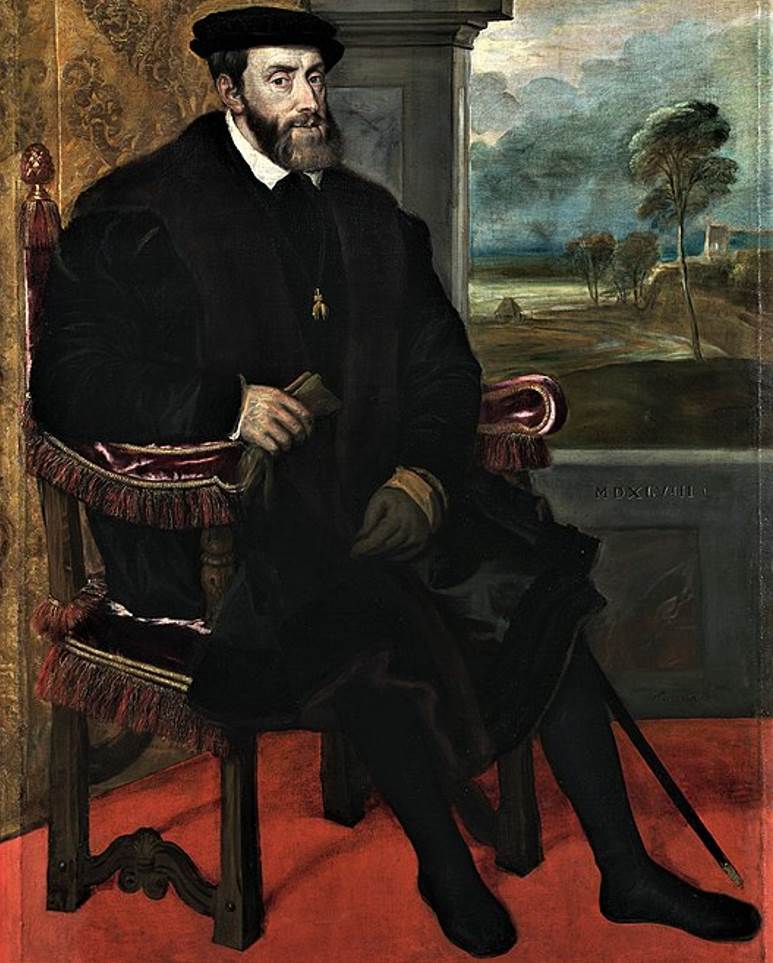
9. Annunciation – Filippo Lippi
- Date created: 1443-1450
- Dimensions: 203 × 186 centimeters (80 × 73 inches)
Annunciation is a painting by Filippo Lippi (1406-1469), one of the most renowned painters of the Earl-Renaissance period who was also a Carmelite priest. As you surely expected, his paintings and frescoes mainly depict religious subjects such as this fascinating work.
It depicts the moment that the Virgin Mary hears the news that she will give birth to the Son of God, Jesus Christ. The white dove between the kneeling angel and Mary is the symbol of the Holy Spirit. Lippi placed the figures into a portico and integrated an abundance of architectural elements.

10. Mystic Marriage of Saint Catherine – Lorenzo Lotto
- Date created: 1506-1508
- Dimensions: 71 x 91 centimeters (27.9 x 35.8 inches)
The Mystic Marriage of Saint Catherine is a painting by Italian High Renaissance artist Lorenzo Lotto (1480-1556). It depicts an important moment in the life of Catherine of Alexandria, an important saint and Chrisitan martyr in the Eastern Orthodox church.
The artist included his signature, “Laurent. [ius] Lotus F.[ecit],” on a fragment of Catherine’s broken wheel that was used for her execution. According to Saint Catherine’s legend, the moment she was placed on the wheel it mysteriously shattered.
